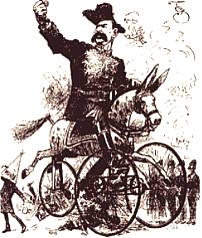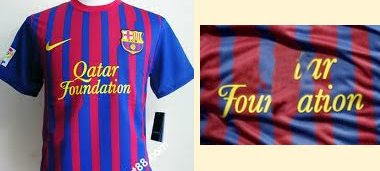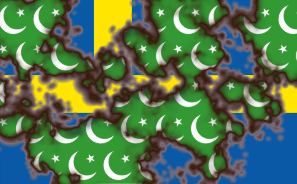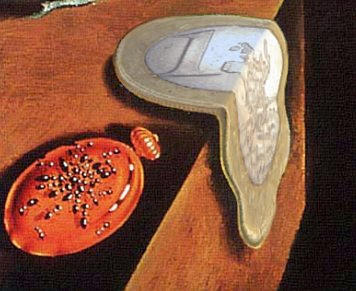After a long hiatus, Apollon Zamp returns with guest-essay reviewing the television series “The Pacific”. In the wake of last night’s discussion of “Bomber” Harris, this post provides a look at the other major theater in World War Two — and the historical revisionism concerning it that has now become dominant in popular culture. The Pacific: A Regrettable Lack of Common Virtues
The Pacific: A Regrettable Lack of Common Virtues
by Apollon ZampI was fourteen years old when I saw
Saving Private Ryan (against the express wishes of my parents). Having long been fascinated by World War Two history — I was perhaps the only twelve-year-old with a subscription to WWII Magazine — I was amazed by what Tom Hanks and Steven Spielberg had managed to create. The visceral and horrific nature of war was plainly evident — as were the bonds that form between men who fight alongside each other, and the pain they share and struggle to repress when their buddies get wounded or killed. Spielberg was trying as hard as possible to re-create the realities of war, and many veterans have attested to his success in doing so.
The success of the film was part and parcel of a greater re-awakening of Americans’ interest in their country’s part in World War Two. Tom Brokaw’s
The Greatest Generation and a slew of Second World War-themed video games bear witness to this. (Tycho Brahe, author of the gaming webcomic
Penny Arcade, once remarked that “Normandy Beach is the new Hoth,” which indicates the intensity of the cult-like status that World War Two-themed material had gained.)
Spielberg and Hanks continued where they had left off with
Saving Private Ryan with the HBO miniseries
Band of Brothers. The series ties in briefly with
Ryan — we see paratroopers from the 101st Airborne Division throughout the film, and the titular James Francis Ryan is himself a private in Baker Company, 506th Parachute Infantry Regiment — one of the three regiments that formed the backbone of the 101st. However, whereas
Ryan focused on the Normandy invasion as a whole — featuring troops from the 29th Infantry Division, the 2nd Rangers, and the 101st Airborne —
Band of Brothers focused on one company — E (“Easy”) Company, 506th PIR, 101st Airborne — for the duration of the war.
One of the things that really stood out about
Band of Brothers was the chemistry among the cast. This was not an accident, nor a fluke. Dale Dye, a retired Marine Corps officer, provides technical support for military movies, and is known for his adherence to realism and realistic portrayals of fighting men. He provided the technical direction for
Ryan, during which he put the actors involved through a miniature two-week “boot camp.” Part of his method was to exclude Matt Damon, who played Ryan, from the training, thus creating a real element to the other characters’ dislike of Ryan which came through on the screen.
Dye’s methods were similarly applied to
Band of Brothers. He put the men who were going to portray actual veterans (in some cases, veterans who were still alive) through a truncated version of parachute infantry school, complete with physical training, battlefield exercises, and simulated indoor jump exercises similar to what current airborne infantry troops go through during training. A chemistry naturally developed among the actors involved — a chemistry that was no doubt enhanced by Dye’s farewell speech at the end of the training period, reminding the men who were going to serve as the avatars of E/506th PIR that they had a responsibility and a privilege to represent those who had fought their way across Europe between June 1944 and May 1945.
This chemistry shone through for the entirety of the series, both in positive senses — the obvious camaraderie and brotherly devotion the men had for each other — as well as the negative — for example, the scenes that take place in Bastogne, which showed the hardships endured as young men barely out of their twenties watched each other get maimed, killed, or suffer nervous breakdowns. The skilled production, beautiful cinematography, and the almost kinetic spark of shared energy among the actors involved combined to make this an excellent series. To top it all off, the producers never aired any of the episodes until the veterans from Easy Company — who served as valuable sources of firsthand information — had watched and approved the content as historically accurate.
All of this served as a rather dramatic backdrop for
The Pacific, which aired nine years after
Band of Brothers. Once again, Hanks and Spielberg had partnered up, with Dale Dye once again providing technical direction, except this time they were covering a part of the war that had not been featured in either
Ryan or
Band of Brothers. The Pacific Theater — which, arguably, was a more far-flung and confusing theater than the European one — until that point had only been explored by mind- and posterior-numbing exercises in navel-gazing such as
The Thin Red Line. Many people, myself included, couldn’t wait to see the Hanks/Spielberg/Dye take on the Pacific theater, complete with the same rich cinematography and sparkling character performances that their earlier works had showcased.
And then I watched it.

 I’ll be away from my desk for the next few days. The news feed will be suspended while I’m gone, and resume upon my return.
I’ll be away from my desk for the next few days. The news feed will be suspended while I’m gone, and resume upon my return. Ahmed Shafiq, the last Egyptian prime minister to serve under Hosni Mubarak — and recently defeated by Mohammed Morsi in the presidential election — has left Egypt for Abu Dhabi along with his entire family. Mubarak’s former head of intelligence has also moved his whole family to Abu Dhabi.
Ahmed Shafiq, the last Egyptian prime minister to serve under Hosni Mubarak — and recently defeated by Mohammed Morsi in the presidential election — has left Egypt for Abu Dhabi along with his entire family. Mubarak’s former head of intelligence has also moved his whole family to Abu Dhabi.










